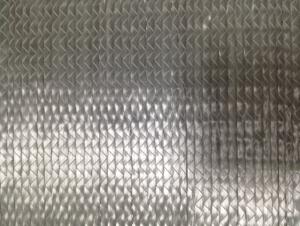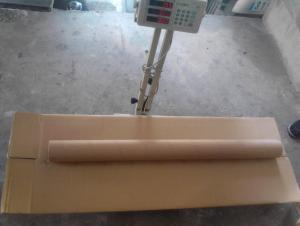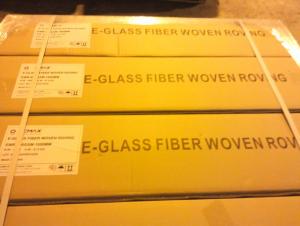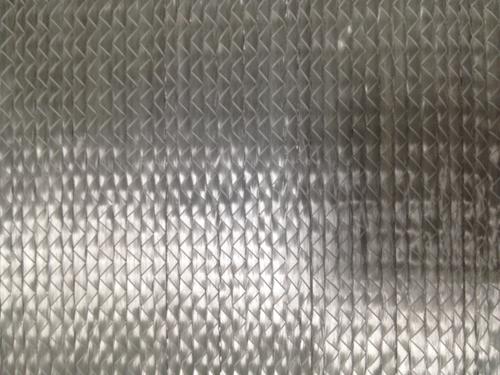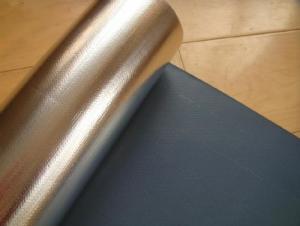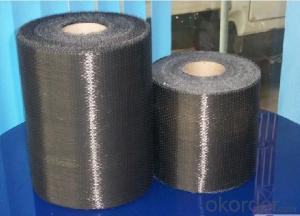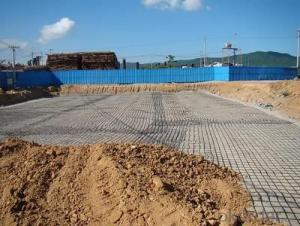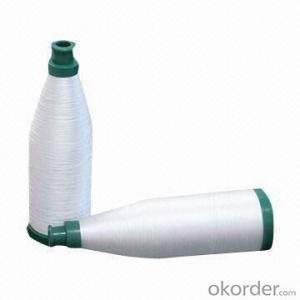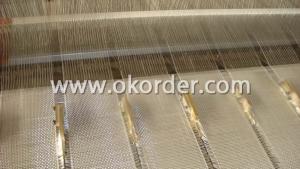HIGH QUALITY E-GLASS STITCH COMBO MAT-TTX
- Loading Port:
- China main port
- Payment Terms:
- TT or LC
- Min Order Qty:
- 1 kg
- Supply Capability:
- 100000 kg/month
OKorder Service Pledge
OKorder Financial Service
You Might Also Like
Brief Introduction: Fiberglass stitched combo mat (TTX)consists of two or more layers of fiberglass rovings which are stitch-bonded.one layer of rovings consists of parallel aligned roving and different layers of rovings can be oriented differently and have different linear density.The rovings specification,rovings orientation,number of rovings layers,mat width and roll diameter can be tailor-made according to customers' requirements. Characteristics 1. Manufactured by own factory SPECIFICATIONS
| ||||||||||||||||||||||||||||||||||||||||||||||||||||||||||||||||||||||||||||||||||||
FAQ
a.Pacage
Each Eglass stitched Combo Mat is wound onto a paper tube The roll is wrapped up with plastic film,and then packed in a cardboard box. The rolls can be vertically or horizontally placed. For transportation, the rolls can be loaded into a container directly or on pallets.
b.Product storage:
Unless otherwise specified, CHEMICAL FIBER GRIDDING CLOTH should be stored in a dry, cool and rain-proof area. It is recommended that the room temperature and humidity should be always maintained at 15℃~35℃ and 50%~75% respectively.
- Q: Can fiberglass fabric be used for making sports helmets?
- Yes, fiberglass fabric can be used for making sports helmets. Fiberglass fabric is known for its strength, durability, and impact resistance, making it an ideal material for sports equipment such as helmets. The fiberglass fabric can be molded into the desired shape and thickness, providing excellent protection against potential impacts during sports activities. Additionally, fiberglass fabric is also lightweight, which is crucial for ensuring comfort and reducing strain on the wearer. It can also be combined with other materials, such as foam padding, to further enhance the helmet's safety features. Overall, fiberglass fabric offers a reliable option for manufacturing sports helmets that prioritize safety and performance.
- Q: What is the typical tear strength of fiberglass fabrics?
- The typical tear strength of fiberglass fabrics can vary depending on the specific type and construction of the fabric. However, in general, fiberglass fabrics are known for their high tear strength. They are designed to be durable and resistant to tearing, making them suitable for a wide range of applications. On average, fiberglass fabrics can have tear strengths ranging from 10 to 30 pounds-force per inch (lbf/in), with some specialized fabrics reaching even higher tear strengths. It is important to note that tear strength can also be influenced by factors such as fabric thickness, weave pattern, and resin impregnation. Therefore, it is recommended to consult the specific manufacturer's specifications for accurate tear strength values for a particular fiberglass fabric.
- Q: Can fiberglass fabrics be used for clothing or fashion purposes?
- Yes, fiberglass fabrics can be used for clothing or fashion purposes. However, they are less commonly used due to their properties like being non-breathable, stiff, and potentially irritating to the skin.
- Q: How does fiberglass fabric handle moisture?
- With its exceptional moisture resistance and high water-resistant properties, fiberglass fabric is renowned. Its structure, comprising interwoven glass fibers, prevents water absorption and remains unaffected by moisture or humidity. Consequently, fiberglass fabric proves itself as an ideal choice for various purposes, especially those involving exposure to moisture, like boat hulls, outdoor furniture, and building materials. Furthermore, it inhibits the growth of mold or mildew, further enhancing its capacity to withstand moisture.
- Q: Are fiberglass fabrics suitable for use in the energy sector?
- Yes, fiberglass fabrics are suitable for use in the energy sector. Fiberglass fabrics are made from woven glass fibers and are known for their high strength, durability, and resistance to heat, chemicals, and corrosion. These properties make them well-suited for a wide range of applications in the energy sector. One of the key uses of fiberglass fabrics in the energy sector is in thermal insulation. Fiberglass fabrics are commonly used to insulate pipes, tanks, and equipment in power plants, oil refineries, and other energy facilities. The excellent thermal resistance of fiberglass helps to reduce heat loss, improve energy efficiency, and maintain the desired temperature levels in these applications. Furthermore, fiberglass fabrics are also used in the construction of wind turbine blades. The high strength and lightweight nature of fiberglass make it an ideal material for manufacturing wind turbine blades, which need to be able to withstand high winds and generate electricity efficiently. Fiberglass fabrics provide the necessary structural integrity and aerodynamic properties required for wind turbines. In addition, fiberglass fabrics are used in the manufacturing of fuel cells and solar panels. The chemical and corrosion resistance of fiberglass make it a suitable material for constructing the casings and components of these energy systems. The durability of fiberglass also ensures the long-term performance and reliability of these energy technologies. Overall, fiberglass fabrics offer numerous benefits and are well-suited for use in the energy sector. Their high strength, durability, resistance to heat and chemicals, and lightweight nature make them a preferred choice for various applications, including thermal insulation, wind turbine blades, fuel cells, and solar panels.
- Q: Can fiberglass fabric be used for reinforcement in automotive body panels?
- Yes, fiberglass fabric can be used for reinforcement in automotive body panels. Fiberglass fabric is known for its strength, durability, and lightweight properties, making it an ideal material for reinforcing body panels in automobiles. When used in combination with resins or other composite materials, fiberglass fabric can provide the necessary strength and rigidity to withstand the rigors of daily use and protect the vehicle's occupants. Additionally, fiberglass fabric can also be molded into complex shapes, allowing for greater design flexibility in automotive body panel construction.
- Q: What are the environmental considerations of using fiberglass fabric?
- Some of the environmental considerations of using fiberglass fabric include the potential release of hazardous chemicals during production, the energy-intensive manufacturing process, and the difficulty of recycling fiberglass materials. Additionally, fiberglass fabric is not biodegradable and can contribute to landfill waste if not properly disposed of. Overall, the use of fiberglass fabric raises concerns regarding its environmental impact and sustainability.
- Q: How does fiberglass fabric perform in peel strength?
- Fiberglass fabric typically performs well in peel strength due to its strong and durable nature. It exhibits good resistance to delamination or separation under applied forces, making it a reliable choice for applications where peel strength is important, such as in composite materials, automotive parts, and aerospace components.
- Q: Are there any health risks associated with exposure to fiberglass fabrics?
- Yes, there are potential health risks associated with exposure to fiberglass fabrics. Fiberglass is made of tiny fibers that can become airborne when disturbed, and if inhaled, these fibers can irritate the respiratory system, causing lung irritation, coughing, and shortness of breath. Prolonged exposure to fiberglass can also lead to more serious health issues such as lung scarring and fibrosis. It is important to take proper safety precautions, such as wearing protective clothing and masks, when working with or around fiberglass fabrics to minimize the risk of health problems.
- Q: What are the different widths available for fiberglass fabric rolls?
- The different widths available for fiberglass fabric rolls vary depending on the manufacturer and specific product, but common widths range from 1 inch to 60 inches.
Send your message to us
HIGH QUALITY E-GLASS STITCH COMBO MAT-TTX
- Loading Port:
- China main port
- Payment Terms:
- TT or LC
- Min Order Qty:
- 1 kg
- Supply Capability:
- 100000 kg/month
OKorder Service Pledge
OKorder Financial Service
Similar products
Hot products
Hot Searches
Related keywords
